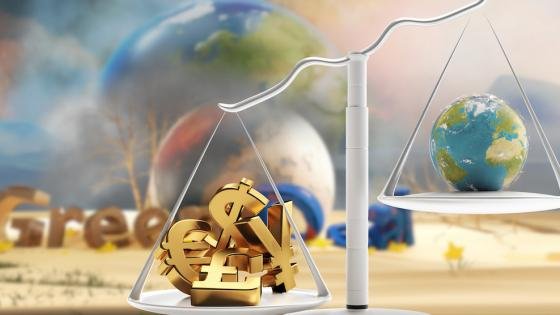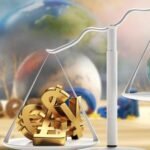In recent years, climate change has moved to the forefront of global discussions, affecting not only the environment but also shaping government policies and economies around the world. The increasing impacts of global warming, including rising sea levels, extreme weather events, and changes in ecosystems, are forcing countries to rethink how they manage resources, trade, and growth. As a result, the concept of a green economy and sustainable development has become more important than ever.
This article explores how climate change is driving shifts in global policies and economies and what steps are being taken to ensure a more sustainable future.
1. The Urgency of Climate Change
Climate change refers to long-term changes in temperature and weather patterns, largely due to human activities such as burning fossil fuels, deforestation, and industrial practices. The release of large amounts of carbon dioxide and other greenhouse gases has led to global warming, which is already having visible effects. According to the United Nations, global temperatures have risen by 1.1°C since the pre-industrial period, and scientists warn that if this trend continues, the consequences could be devastating.
The urgency of climate change is now widely acknowledged, as it affects nearly every aspect of life on Earth. From melting glaciers to increasing droughts and floods, it poses a serious threat to food security, human health, and biodiversity. These risks are prompting countries to develop environmental policies aimed at reducing carbon emissions and promoting sustainability.
2. Environmental Policies and Global Cooperation
Governments across the globe are implementing environmental policies to combat climate change and transition to a greener, more sustainable future. These policies typically focus on reducing greenhouse gas emissions, promoting renewable energy, and encouraging more sustainable land and resource use.
A key moment in the fight against climate change was the Paris Agreement in 2015, where 196 countries agreed to work together to limit global warming to well below 2°C and aim for 1.5°C. This international treaty marked a significant step forward in climate diplomacy, setting a framework for governments to develop their national action plans.
Countries are also adopting a variety of strategies, such as:
- Carbon pricing: By putting a price on carbon emissions, governments are encouraging companies and individuals to reduce their carbon footprint. Carbon pricing can come in the form of carbon taxes or cap-and-trade systems, both of which incentivize businesses to adopt greener practices.
- Regulating industries: Environmental policies are targeting major polluting industries, such as energy, transportation, and manufacturing, by imposing stricter regulations on emissions and encouraging cleaner technologies.
- Incentivizing renewable energy: Many governments are offering subsidies and tax breaks to promote the use of renewable energy sources such as solar, wind, and hydropower. This transition to clean energy is crucial in reducing reliance on fossil fuels.
3. The Rise of the Green Economy
As the world grapples with the challenges of climate change, the concept of the green economy is gaining traction. A green economy is one that aims to achieve sustainable development while minimizing environmental risks and ecological scarcities. In other words, it’s an economic system where growth is driven by green technologies, sustainable resource management, and reduced carbon emissions.
This shift toward a green economy is having significant effects on industries, businesses, and employment. As traditional sectors such as coal and oil are being phased out, new opportunities are emerging in areas like renewable energy, electric vehicles, and sustainable agriculture. Jobs in clean energy sectors are increasing, while companies that prioritize environmental sustainability are gaining a competitive edge.
Governments are also taking steps to encourage the growth of the green economy by investing in infrastructure projects that support sustainability, such as:
- Green buildings: These structures are designed to be energy-efficient and environmentally friendly, reducing their carbon footprint through the use of sustainable materials and renewable energy sources.
- Public transportation: By expanding public transit networks and promoting electric vehicles, governments can reduce traffic emissions and promote cleaner, more efficient transportation systems.
This transition to a green economy not only helps address climate change but also creates new opportunities for economic growth and job creation.
4. Sustainable Development and Economic Impact
Sustainable development is about meeting the needs of the present without compromising the ability of future generations to meet their own needs. This concept is at the heart of global climate policies and is shaping the way economies operate.
Incorporating sustainability into economic planning means balancing environmental protection with economic growth. For example, while economic activities such as agriculture, industry, and construction are essential for development, they must now be done in a way that reduces environmental harm and conserves resources.
Countries that invest in sustainable practices often see long-term economic benefits, including:
- Increased efficiency: Sustainable industries tend to use resources more efficiently, reducing waste and lowering costs over time.
- Attracting investment: Businesses that prioritize sustainability are increasingly attracting investment from environmentally conscious investors. Green bonds, for instance, are a growing market that allows companies to raise funds for projects that benefit the environment.
- Boosting innovation: The shift to sustainability encourages innovation in technology, energy, and infrastructure. New products and solutions are being developed to address climate change, such as carbon capture technologies and sustainable farming practices.
However, the shift toward a more sustainable economy can also pose challenges. Some industries may face job losses as they transition away from high-carbon activities, and developing countries may struggle to finance green initiatives. This is why global cooperation and financial support are critical in ensuring that all countries can participate in the green economy.
5. The Role of Businesses in Tackling Climate Change
It’s not just governments that are stepping up to the challenge of climate change. Businesses are playing an increasingly important role in shaping policies and driving the green economy. Many companies are taking action to reduce their carbon emissions, adopt sustainable practices, and support environmental initiatives.
Corporate social responsibility (CSR) has become a key focus for many organizations, with businesses setting ambitious goals to go carbon-neutral or even carbon-negative. These actions not only benefit the environment but can also improve a company’s reputation and attract environmentally conscious customers.
Conclusion
Climate change is reshaping the way the world operates. Environmental policies are becoming more stringent, economies are transitioning toward greener industries, and the concept of sustainable development is driving innovation. As the world continues to face the realities of global warming, the need for global cooperation and strong, effective climate policies will remain crucial in ensuring a more sustainable and resilient future. The shift to a green economy is not only necessary for protecting the planet but also for creating long-term economic growth and prosperity.





